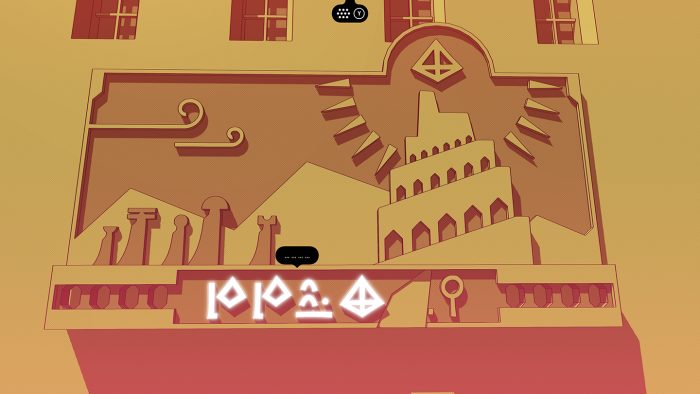Word to the WAIS
Solving a puzzle in a video game is essentially a part of the experience at this point. Sometimes we’re frustrated by the time we finally get that end result, and sometimes we’re happy or just satisfied and ready to move on. More often than not a random puzzle will feel like a purposeful hindrance, like the many pipes we have to align or the cogs we have to rotate. They’re just there, extending the length of a game’s final clock, slowing us down so that we don’t plow through. Rarely do we feel like we’ve actually accomplished anything.
Not with Focus Entertainment & Rundisc’s Chants of Sennar. The entire experience is built on puzzles — ones that force us to remember, deduce, and initiate, and ultimately feel like we’re the smartest person in the room.
The premise of Sennaar is that it’s built on layers of language. Set in some variant of the Tower of Babel, we’re tasked with resolving the mystery of why we suddenly can’t communicate any more. Language, it seems, is incredibly important, and if you don’t know what someone is saying then you can’t communicate with them. But if you can start to piece some things together then a whole heck of a lot of doors start to open, both figuratively and physically (or digitally, in this case).
Sennaar utilizes language extrapolation through a variety of ways. Someone may wave to us and an text box will show up with an icon in it. Does that mean hello? Help? Get away? We don’t know. But when we get closer we realize that the person was just being nice and greeting us, so we pop open our in-game journal, find the icon we just saw, and add the word “hello” next to it. That seems simple enough, but it branches from there. In a mural on a wall we might see someone waving to another person, with three icons below them. The middle text is that greeting we just found, while the outboard text is unique. It may depict an action, a place, or a type of person. Another mural shows one of those icons under a similar looking figure, so we note that this may mean “person” and that the first mural was depicting a typical greeting. Another mural shows that person greeting a more gruff-looking figure. We know “person” and “hello(greet)” so what does this new third text mean? Perhaps the first isn’t “person” but a specific KIND of person — a peasant? And this new one is… a soldier? “Person Greets Soldier”. Okay! Now we’re getting somewhere.

These little beats drop all over the game, whether in text on walls, in interaction with people, in objects, or even in the passage of time. It’s multi-layered and it’s fascinating, and when we finally start to pull words together into sentences and into lore and interaction and fully clearing the language of one floor, it makes us feel like we’re brilliant. Like no one has figured this puzzle out in this way. It makes us feel like we’ve accomplished something.
But that feeling can take some time to get to, and Chants of Sennaar doesn’t necessarily feed us enough lingual fruit along the way to keep us moving. There’s a surprising amount of traversal required to get around, sometimes more than we want to. It’s probably physically possible for our character to step over a hazard, but Sennaar requires us to figure out how to climb to the top of a tower, read script there that is required to activate a switch, then make our way to another room to flip it. It’s almost… too much? The smartness is still held back by filler that takes away from that ultimate affirmation, and that’s a bit of a bummer. A game doesn’t need to be complex to make us feel intelligent.

Thankfully Sennaar doesn’t go TOO far in that direction, but it can get a bit time consuming when we just want to get to the next part of this puzzle. The visual and audio elements are gorgeous to experience, at least, and sometimes if we’re a bit bogged down it’s nice to just sit back and stare at the scene that we’re in. It’s art therapy, in a way.
I can relate to the Chants of Sennaar experience. Having recently been to Japan and not knowing a lick of Japanese, I used repetition of text, signs, and vocal inflection to deduce what people were saying to me. Then, I put a few of those together to understand the next step, and the next step, and the next step. I was able to begin to communicate. By the end I almost felt like a local. Apart from a few unnecessary steps, Chants of Sennaar makes us locals one each floor of Babel.
This review is based on a Nintendo Switch eShop code sent to SideQuesting by the publisher. This video first appeared on The SideQuest Live! for September 10th, 2023.



No Comments